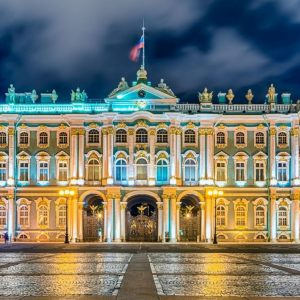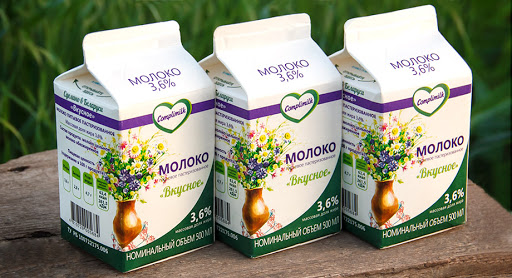Negoreloye: the USSR ended here, the liberation campaign of the Red Army began from here
Here the USSR ended and Poland began, from here the liberation campaign of the Red Army began.
And a small dot on a map under the magnifying glass of history can turn into a symbol of great events. Negoreloye, a small railway station that celebrated its 150th anniversary in 2021, has seen many great people and events in its lifetime, and from 1921 to 1939 served as the entrance gate to the USSR.Today, this quiet station, where only electric trains stop, has become one of the symbols of the reunification of Belarus. About what happened in those distant years, we talked with eyewitnesses and connoisseurs of history, leafing through old books and brochures in search of facts.
Negoreloye... A settlement that arose in an open field with a wave of the finger of the Russian engineer Count Berg. Once it was part of the Koydanovsky county belonging to the Radziwills, then, after the partition of Poland, it passed to the Ablamoviches.
In 1871, Negorely was unspeakably lucky. A station of the Moscow-Brest railway was set up here. But the steel line could be laid in completely different places. “The direction of the railway line through Bobruisk and Pinsk has an advantage over the direction proposed by Count Berg through MINSK,” insisted Pavel Petrovich Melnikov, Minister of Railways, in a submission dated May 19, 1867 to the Committee of Railways. The members of the committee - eight against five - supported him, but on March 11, 1868, the tsar drafted a resolution: "Execute according to the opinion of the minority." It would seem that the issue is closed, but on December 27, 1868, the Committee approved a new plan with the construction of a route through Mogilev.
Only in February - March 1870, the plan of Count Berg was adopted, and the construction of the Moscow-Brest road began. In a little over a year, the surrounding peasants with hoes, shovels and wheelbarrows laid a track 620 miles long, which included 698 artificial structures, including 135 metal bridges. One and a half thousand people worked at the construction of the station in Negorely.
The first train passed here on November 28, 1871. Two decades later, a second one was laid next to the first track, but until the 20th century there were only two stations between Minsk and Stolbtsy: Fanipol and Negoreloye. The Koydanovo station was opened in 1906, the stopping point Stankovo - in 1951. It is not surprising that Jan Karol Alexander Chapsky, the mayor of Minsk, rode to work every day.
But in 1879, the Chapskys got access to the rich non-Gorelian lands, and at the same time to the railway, through which it was possible to EXPORT agricultural products to Stolbtsy, and from there along the Neman to export them to distant countries. The estate was acquired by the father of the future mayor Emerik Nikolai Severin Zahariusz von Hutten-Czapsky, laid orchards, built capital barns, a dairy farm and a CHEESE FACTORY, which received MILK from 300 thoroughbred cows.
It would seem idyll! But the wheel of history made another turn, and when, according to the Riga Treaty of 1921, the border lay literally a stone's throw from Negorely, it was this inconspicuous station that was destined to serve as a gateway to the USSR for a long 18 years.
Stolbtsy has been the gateway to Europe all these years. Unlike Negorely, at the entrance to Poland, no one arranged magnificent holidays for passengers. "Polish boredom," wrote Mayakovsky in the poem "They and Us."
And Negoreloye was not just a gate, but a triumphal arch with the inscription "Hello to the working people of the West!". On the reverse side for those leaving the USSR was inscribed "Communism will sweep away all borders." The entrance arch was closer to the border, near the Kolosovo station. Eminent guests and prominent Soviet citizens returning from distant lands were greeted on the non-Gorelsky platform by enthusiastic crowds of local residents - with a brass band, bread and SALT and pathetic speeches.
Two worlds - two tracksBack in 1851, during the construction of the St. Petersburg-Moscow (since 1855, the Nikolaevskaya) railway, Emperor Nicholas I ordered that the gauge be set to 1524 mm. Very comfortable - exactly 5 feet. But the main thing is a strategic plan so that the Russian gauge does not dock with the 1435-mm European one.
- It was a military measure to prevent attempts to quickly get to us. It won't work quickly! - explains Marina Voronovich, HEAD of the Negoreloye station.
Marina Petrovna, a third-generation representative of a dynasty of railroad workers, has been working in Negorye for nine years, has written a book about Belarusian railways. She passed on her passion and profession to her son Eugene. We talk to her right at the station, in her office, then on the platform.
“Different widths have survived to this day,” she says. - Unless the domestic gauge in the post-war years narrowed to 1520 mm. But even today in Brest the trains are "changing shoes". In professional language, this is called wheel rolling. In 1921-1939, the narrow gauge from Europe reached Negorely, and the wide gauge from the USSR to Stolbtsy.
This fact is also confirmed by 95-year-old Anton Azarkevich, who at that time lived with his parents in a lineman's booth on the 805th kilometer of the railway on the Soviet side of the border:
- Between Negorely and Stolbtsy, one track was wide, the other narrow.
Anton AzarkevichSo I see these two ruts of different sizes, running in parallel, and then scatter to opposite ends of the universe once and for all. Even buying a ticket to the right station in this unsteady world was impossible.
“In Warsaw, at the ticket office, I received a surprised refusal: a ticket to Moscow? A ticket is issued only to Stolbtsy, from Stolbtsy you take a ticket to Negorely, in Negorely you already get a ticket to Moscow at the Russian ticket office,” writes Anastasia Tsvetaeva in 1927.
Such was the reality: border and customs inspections in Stolbtsy, crossing the border near Kolosovo, and then the Negoreloye checkpoint and the customs of the same name, which were subordinate to the 16th Koydanovsky border detachment. Inspection was carried out in a special hall, and here, in Negorely, wheel sets were rolled from the European standard to the Soviet one.
Customs control at the Negoreloye station. Early 1930s- At the Negoreloye station there were rolling dead ends and a shunting locomotive that rearranged the cars, - says Marina Voronovich. - The technology is exactly the same as now in Brest: the car rises, the wheels roll out, others roll up.
Marina Voronovich- Every day a passenger train came from Poland, was driven onto rolling tracks, wheel sets were changed here, and only after that it went further, to RUSSIA, - Anton Azarkevich echoes.
However, according to other testimonies, passengers in Negorely simply changed from a European train to a Soviet one. Rolling was practiced in relation to freight cars, since only a couple of freight trains passed through the border per day.
- Today, 50 pairs pass through Negoreloye per day, not counting electric trains. And that's a little more! - Marina Voronovich enlightens us. - In the 2000-2010s, we let in about 75 pairs every day. Due to sanctions and covid, the intensity of traffic has noticeably decreased.
And then there was the only pair of passenger trains, but what a! Paris - Negoreloye - Manchuria, Manchuria - Stolbtsy - Paris. Transcontinental Express, world champion in range. Just imagine: two weeks of travel in order to look into the eyes of the Pacific Ocean from the glorified Manchurian hills.
The stop in Negorely lasted 1 hour and 10 minutes. Or, according to Marina Voronovich, 1 hour 40 minutes. In Stolbtsy - 45 minutes.
Did the parking lot increase when distinguished guests passed? "Petrel of the Revolution" Maxim Gorky entered the USSR through Negoreloye four times: in 1928, 1929, 1931 and 1932. And every time at the station he was given a rally with a brass band, speeches, flowers and pioneers.
Maxim Gorky with border guards at the Negoreloye station. 1931But Alexey Tolstoy, Alexander Fadeev, Vsevolod Vishnevsky, Agniya Barto, Yanka Kupala, Yakub Kolas, Romain Rolland, Henri Barbusse, Julius Fucik, Stefan Zweig, Bertolt Brecht passed this route ... And this is only a small part of the celebrities.
Alexei Tolstoy with his wife on the platform of the station in Negorely. 1937On December 23, 1934, the famous Negro singer Paul Robeson gave a concert at the station.
In August 1936, the first Soviet world chess champion Mikhail Botvinnik, returning triumphant from an international tournament in Nottingham, England, right at the station after the rally held a simultaneous game session for border guards and local Komsomol activists.
Less than a year passed, and on July 27, 1937, a solemn meeting was held in Negoroe for Soviet pilots Valery Chkalov, Georgy Baidukov and Alexander Belyakov, returning to the USSR, who on the ANT-25 aircraft made the first direct flight in history along the route Moscow - North Pole - North America. And again flowers, pioneers, interviews…
- Even Ribbentrop visited here after negotiations with Molotov, - says the former DIRECTOR of the Negorelsky secondary school No. 2, local historian Vladimir Kharitonovich Mishuro. - He flew to Moscow by plane, and returned back by train without too much noise.
Vladimir MishuroIt is not surprising that with so many important people at the Negoreloye station, back in the early 1920s, a solid stone two-story Art Nouveau station was erected with a front waiting room, an audit hall, an exquisite European restaurant, a hairdresser, a foreign exchange store, a telephone, a telegraph office and the Intourist hotel. . Luxury almost Moscow!
And the staff of fifty people was almost entirely Russian, right down to watchmen, switchmen and kubogreys. The discipline is the strictest, wearing a uniform is mandatory.
- The headquarters of the Western Railway was in Smolensk, - Vladimir Mishuro explains, - and the border guards, customs officers are all visitors. Because the school was Russian.
Despite the fact that the Dzerzhinsky district in 1932 was declared Polish-national.
- Of the 17 village councils, 10 were Polish. At the insistence of Moscow, they were forced to write documentation in Polish, - Vladimir Kharitonovich dumbfounds me. - The Negorelsky village council remained Belarusian, and Polish national schools were opened in Borovoe, Tatarshchina, Skirmontovo.
Suitcase without a handleOn December 8, 1928, Vladimir Mayakovsky was returning from his last trip abroad. Paris, Berlin...
It was then that the poignant poem "They and Us" was born, where we see Silesia "caught in the spleen", and "the slippery soil of Poland from the rain", and the impatient expectation of the Motherland:
"On the horizon -
white.
Snow
and Unburned "-
and birch trees at the Negorelsky customs,
"preparing with snow,
in the snow
gloss
great joy."
But this, although there are no borders ahead, is still not Russia:
"Thousand kilometers
to Moscow
I tear.
naked
beggar
running
Belarus".
Is it not because of this poverty, which it is even difficult for us to imagine today, on the eve of the signing of the Riga Peace Treaty between the RSFSR, the Ukrainian SSR and Poland, our country was treated like a suitcase without a handle?
"The head of the Soviet delegation A.A. Ioffe did not allow the representative of the BSSR A.G. Chervyakov to the negotiations, informing him that, if necessary, the Soviet side would transfer the entire territory of Belarus to Poland," wrote Belarusian historian Igor Valakhanovich in 2004.
The country survived only because the head of the Polish delegation, J. Dombsky, refused the generous Soviet offer. It was too dangerous. And without that, national minorities made up more than 40% of the population of the "second Commonwealth": 20% Ukrainians, 9% Belarusians, 8% Jews, 3.9% Germans.
The Poles took only half - what they were ready to swallow at that time - 113 thousand square kilometers with a population of 4.6 million people. They cut the country in half, but still they had indigestion.
The Poles did not want and were not able to modernize Western Belarus.
According to data for 1936, the number of workers in the lands occupied by Poland decreased by 17% compared to 1913. About 82% of the population was engaged in agriculture.
The then Deputy Prime Minister Kwiatkowski frankly stated that over 80% of gas plants, over 80% of printing houses, cultural, sanitary and medical institutions of the "second Commonwealth" were located on the territory of ethnic Poland. It consumed 93% of all electricity, about 85% of iron.
The Vilna newspaper Slovo, which had no sympathy for either the USSR or Bolshevism, on February 5, 1930, published the most curious data of the Vilna Chamber of Industry and Commerce on the consumption of resources in various regions of what was then Poland.
Thus, iron in the Warsaw Voivodeship was used per capita per year 24 kg, in Lesser Poland (Krakow, Katowice, Lublin) 20 kg, in Greater Poland (Poznan) 17 kg, in Eastern Kresy 4 kg. Coal consumption in the Warsaw Voivodeship was 616 kg per person per year, in Lesser Poland 1025 kg, in Eastern Kresy 75 kg. The consumption of artificial fertilizers in the Warsaw Voivodeship at that time was 651 kg per person per year, in Lesser Poland 1025 kg, in Greater Poland 5649 kg, in Eastern Kresy 49 kg. SUGAR in the Warsaw Voivodeship was eaten by an average soul in the amount of 51 kg per year, in Lesser Poland 12 kg, in Greater Poland 18 kg, in Eastern Kresy 7 kg. So life, especially for a peasant, was not sweet. Especially when you consider that over 80 taxes and fees were hung on him, and the amount was 5-7 times higher than in tsarist Russia.
Plus a monstrous disproportion in land ownership. Only 0.9% of the landed estates owned 40.5% of the arable Belarusian land. On average, one landowner's latifundia accounted for 500 hectares. 10.3% of the land was owned by rich peasant farms, kulaks, they accounted for 4.3% of the total number of landowners. On average, a wealthy peasant family had 80 hectares at its disposal. The poor peasant households were 95%, and they occupied 49.1% of the land. On average, 2.7 hectares per family.
The Vechur Varshavsky newspaper wrote: “A peasant in Western Belarus stops using an iron ax because the old one has deteriorated and there is no money for a new one. When something needs to be cut, he tries to do it with a stone ax made according to the method used in prehistoric stone century. He no longer uses iron nails, replacing them with wooden ones. No one forges horses, since the soil is soft, and iron on horseshoes is a pity. Even the smallest pieces of iron are a treasure for the peasant of Polissya. Each piece of iron he finds is carefully hidden, reforged and remade many times."
The peasants plowed with a plow, a hoe, because of which the soil was depleted and the yields were low.
“People in the villages live very poorly,” writes a settler, a corporal who received an allotment in the Shchuchin district of the Novogrudok voivodship. “Seven people live on one or two hectares of land. Their life is a little better than the life of animals. enough. The peasants have no boots. They wear wooden slippers. In winter they freeze in their crooked huts without fuel. There is no money to buy fuel. Sometimes the peasant brings a few branches and smokes in the hut. They grieve like that until spring. In the spring they come to life a little. Later, the berries ripen, pick mushrooms. But even this is not easy to get. If they catch a person who has gone into the forest for berries, then they will take the berries from him, beat him, even though there will be a lot of berries in the forest."
No wonder the rampant smuggling, which was told to us by the director of the Dzerzhinsky Museum of Local Lore Galina Vashkevich:
- In the first years after the division of the country, they came with bags, sacks, trunks. There were not enough border guards for the entire territory, so the border could easily be crossed by swamp paths. In Stolbtsy, Ivenets, Rubezhevichy, Rakov, enterprising people opened shops where smuggled goods could be sold.
The smugglers were followed by spies, who were caught by literally the entire border population of the USSR.
“Political information was conducted with them: they say, if you see suspicious people on your territory, report them immediately,” says Galina Vashkevich.
A vivid example for the inhabitants of the border area was the head of the collective farm, Maria Yankovskaya, who once met strangers at dawn dressed in women's clothes. She agreed to take them where they asked, and led them straight to the border outpost, for which she was awarded state awards, and the "all-Union headman" Kalinin gave her a sewing machine.
Smuggling was also carried by rail. Precious metals were melted into bars of soap. Furs and expensive fabrics were transported "on a living thread."
- What I'm wearing is considered my clothes, - Galina Viktorovna clearly explains. - Let's say I make myself a shirt-front from nutria or arctic fox, grab it on a live thread ... Or wrap a piece of natural silk around me - here you are, a skirt!
Smugglers, like no one else, had the opportunity to compare the standard of living on both sides of the border, and the Soviet government did everything to turn Negoreloye into a showcase for the achievements of socialism. There is a power plant and MTS (machine and tractor station) - one of the first in the country.
- The collective farm was rich, there were many cows, - Anton Azarkevich recalls.
Anton AzarkevichMost surprisingly, the power plant has survived to this day. Demobilized in 1951, Anton Ignatievich worked on it as a machinist.
- Steam and diesel power plants belonged to the railway department at that time. There were two locomobiles inside. The same steam locomotives, only without wheels, - Anton Ignatievich smiles.
It looks like the stone age. But just imagine with what eyes a Western Belarusian peasant looked at the "light bulb of Ilyich", at a tractor with an iron plow.
Eastern Kresy under Poland did not develop. Even the landlords (let us recall the story of Prince Obolensky in the March issue of Belaruskaya Dumka) lived mainly by selling land.
But the polonization progressed at a frantic pace. Of the 400 Belarusian schools by 1935, only 16 remained in Western Belarus, and in 1937 they were closed.
“There can be no question of any Belarusian people, since Belarusians do not have any traditions of their own,” wrote Vladislav Studnitsky, an ideologist of Polonization, in 1910. “There is no need to talk about Belarusian culture: it is only a sphere of crossing Polish and Russian influences. Belarusians - this is ethnographic material, it is an intermediate form between Poles and Russians.
But the Belarusians themselves did not think so. Isn't that why Western Belarus was waiting with such impatience and trepidation for the reunion with the eastern brothers?
Red Army campaignAnd it has come. The external outline of events is well known. On August 23, 1939, Molotov and Ribbentrop signed a non-aggression pact in Moscow. On September 1, Hitler attacked Poland. On the morning of September 17, ambassadors and envoys of 24 states that have diplomatic relations with the USSR, including Germany, Italy, CHINA , Japan, Great Britain, France, the usa and, for some reason, the Tuva People's Republic, were sent a note with the following content:
"Mr. Ambassador,
In transmitting to you the attached Note of the Government of the USSR dated September 17 of this year. addressed to the Polish Ambassador in Moscow, I have the honor, on behalf of the Government, to declare to you that the USSR will pursue a policy of neutrality in relations between the USSR and (name of the country).
Accept, Mr. Ambassador, the assurances of the utmost respect for you. People's Commissar for Foreign Affairs of the USSR V. Molotov".
A completely different note was sent to the Polish ambassador:
"Mr. Ambassador!
The Polish-German war revealed the complete failure of the Polish state. <...> Thus, the agreements concluded between the USSR and Poland ceased to be valid. Left to itself and left without leadership, Poland has become a convenient field for all sorts of accidents and surprises that could pose a threat to the USSR. Therefore, having previously been neutral, the Soviet Government cannot be more neutral in regard to these facts.
The Soviet Union also cannot be indifferent to the fact that half-blooded Ukrainians and Belarusians who live on the territory of Poland, left to the mercy of fate, remain defenseless.
In connection with this situation, the Soviet government ordered the High Command of the Red Army to order the troops to cross the border and take under their protection the lives and property of the population of Western Ukraine and Western Belarus ... "
The same motifs resound in Molotov's speech, which the entire Soviet Union heard on the radio on September 17.
On the same day, the Red Army crossed the western border of the USSR. This move has been in the making for a long time. On September 11, a "partial draft of spares" was announced throughout the vast country. The frightened population rushed to the shops to buy FLOUR, salt and matches. On September 14, the newspapers published a report about the violation of the air border of the USSR by Polish military aircraft. Soviet troops gradually accumulated near the border ...
- I remember - autumn, it was still quite warm - how our troops approached the border, - recalls Anton Azarkevich, at that time a 12-year-old boy. - Horse-drawn artillery, soldiers in regular uniforms, tanks. There are a lot of Red Army soldiers in the forest. I understood that the troops were preparing to cross the border or go to war. I felt that something was brewing.
And finally, this whole armada moved towards Stolbtsy.
- When our crossed the border, artillery volleys thundered. They fired from several guns, and immediately it became quiet, not a single shot, no resistance! Five kilometers to the border - the distance is short, everything was heard, - Anton Ignatievich continues his story.
According to the operational reports of the General Staff of the Red Army, on September 17 Glubokoye, Molodechno, Volozhin, Baranovichi, Snov, Korelichi, Mir were taken, on the 18th - Slonim, Novogrudok, Volkovysk, on the 19th - Pruzhany and Kobrin, on the 20th - Grodno, on the 22nd - go - Brest-Litovsk.
- The people of Western Belarus generally met our army in a friendly, fraternal way, - emphasizes Azarkevich.
“The peasants showed the way, talked about the ways where the enemy had hidden, about his numbers, helped pave the way for tanks and look for enemy forces, beat him with what they could and hard. The workers of Grodno transported infantry across the Neman in boats,” Abramov and Vensky write.
This does not mean that the offensive went like clockwork. In particular, fierce battles unfolded for Grodno.
"The Red Army lost 747 people killed and 1,862 wounded from enemy bullets," we read in the book by N. Abramov and A. Vensky "Western Ukraine and Western Belarus" (Leningrad, 1940).
Our trophies are also listed here: more than 900 guns, over 10 thousand machine guns, over 300 thousand rifles, more than 150 million rifle cartridges, about a million artillery shells, up to 300 aircraft.
So the unity of Belarus was won by the blood of Red Army soldiers from all over the Soviet Union.
"Dze panavala pebbles, zakvіtny sluggish shchastse", - the newspaper "Zvyazda" wrote on September 17, 1939, and the teacher Malevich, a member of the Plenipotentiary Commission for the inclusion of Western Belarus in the BSSR, uttered prophetic words: "How the sun does not rise from the west, and just as the Neman and the Dvina cannot run back from the Baltic Sea to their sources, so our reunited Soviet Belarus will not be under the heel of the Polish and any other pan.
But on the way to a united sovereign Belarus, many more tests had to be passed. The demarcation line, which could not be crossed without special permission, remained at the site of the former border until the war itself.
And then the Germans swooped in, and the inhabitants of the region had to fight not only with them, but also with the Akovites (partisans of the Polish Home Army).
“They knew all our paths and did not travel like we did, ten people at a time - a hundred, fifty, two hundred,” recalls Anton Azarkevich.
At that time, a young partisan scout, he almost lost his life in the hardest battle with the Akovites near Teleshevichi.
- Gangs of Akovites operated in the Polonevich area, 8-10 kilometers from Negorely, until 1953, - he says. - They robbed shops, killed activists, teachers, chairmen of village councils. Even when the MGB and internal troops joined in, it was far from immediately possible to destroy them.
It was in the same 1953 that the Minsk and Belarusian roads were merged into a single Belarusian railway with management in Minsk.
And since then, the Negoroloye station has been living a quiet everyday life. Instead of a luxurious station bombed during the war, there is a small station building in the Stalinist Empire style. Instead of a transcontinental express, there are electric trains and freight trains, to which wagons with grain and potatoes are attached. There is no longer a locomotive depot, where the iron horses from all over the Soviet Union, who rolled their time, rested, nor a station museum. The pride of the Negoryely industry - the beehive and wax processing plant - regularly ships its products throughout Belarus and for export.
Good people live here, and let their life be calm and well-fed in a sovereign country, won back by hard labor, tears, sweat and blood of generations. May there be centuries of tranquility and happiness - without masters, without borders, in friendship, harmony and peace.
Yulia ANDREEVA,
Photo by Pavel ORLOVSKY and from open sources,
Journal.




















































